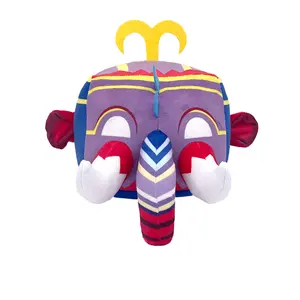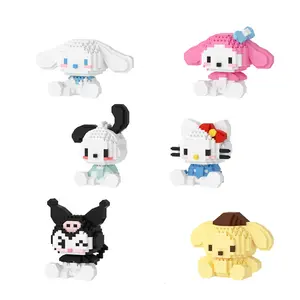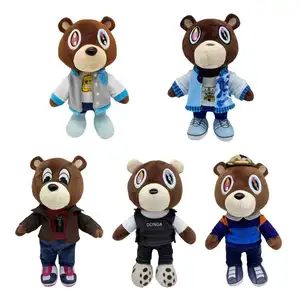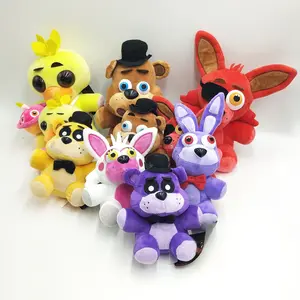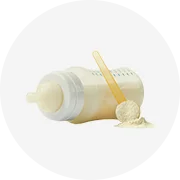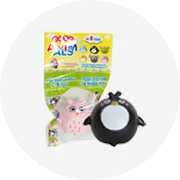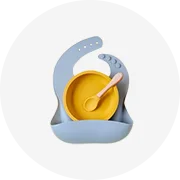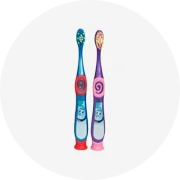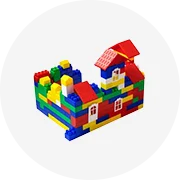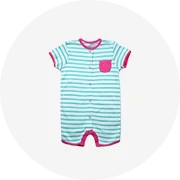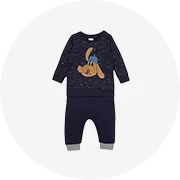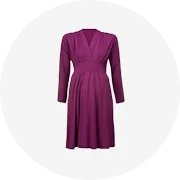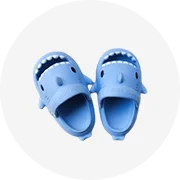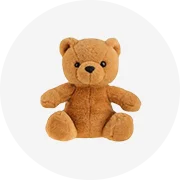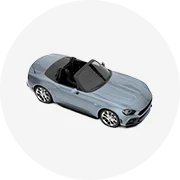Populaire dans votre secteur d’activité






Nouveau design de vêtements pour enfants à motif de dinosaures doux et respirants personnalisés chemise et short ensemble de 2 pièces de vêtements pour enfants pour l'été
2,78 € - 4,63 €
Commande minimale: 50 jeux
Expédition par pièce: 0,8807 €






Offre Spéciale printemps garçon style plaid couleur bloc sweat ensembles 2 pièces ensembles enfants mode ensembles
9,26 € - 10,09 €
Commande minimale: 100 jeux
Expédition par pièce: 3,85 €






Ensemble pyjama respirant 2 pièces en bambou pour bébé Pantalon serré personnalisé Pyjama en bambou pour enfants
7,32 € - 9,69 €
Commande minimale: 300 pièces
Expédition par pièce: 1,03 €







Vente en gros Vêtements enfants décontractés unisexes pour tout-petits garçons T-shirts Pantalons 2 ensembles de vêtements
8,34 € - 10,19 €
Commande minimale: 100 jeux
Expédition par pièce: 3,85 €







Vente chaude été ensembles courts impression personnalisée tissu doux filles laitue bord deux pièces bébé bambou vêtements ensembles
6,95 € - 7,41 €
Commande minimale: 5 jeux
Expédition par pièce: 15,47 €







Vêtements smockés pour enfants, manches bouffantes, broderie carrousel boutique, tenues imprimées personnalisées, ensembles pour filles, nouvelle collection
7,42 € - 11,59 €
Commande minimale: 30 pièces


2014 pas cher gros enfants fille printemps vêtements ensemble de vêtements pour enfants pour la vente en gros
3,34 € - 4,55 €
Commande minimale: 5 pièces






Ensemble de vêtements d'été pour enfants, filles, 5 à 12 ans, à la mode, collection été 2022
Prêt à être expédié
6,22 €
Commande minimale: 3 pièces
Expédition par pièce: 6,93 €






Ensemble pour enfants 2023 printemps et automne nouvelle fille mini ensemble à pois coton enfants à manches longues bébé deux pièces ensemble
Prêt à être expédié
2,79 € - 2,97 €
Commande minimale: 20 jeux
Expédition par pièce: 3,39 €




Vêtements pour enfants smockés à manches courtes en coton avec impression florale magnifique robe smockée pour filles brodée à la main Vente en gros
8,16 € - 10,02 €
Commande minimale: 300 pièces
Expédition par pièce: 4,68 €






Robe de bal de promo en coton pour filles, vêtement imprimé à manches courtes, frocs de noël, promotion, vente en gros, boutique
5,10 € - 6,03 €
Commande minimale: 30 pièces






Mode enfant 2 pièces vêtements pour fille vêtements décontractés
Prêt à être expédié
7,42 €
Commande minimale: 6 pièces
Expédition par pièce: 4,68 €
Recherches associées:
vêtements pour les grosses fillesdeux pièces enfants vêtementsvêtements classiques pour enfantsvendre des vêtements pour enfantsvêtements de douane enfantsvêtements préscolairesvêtements de corps enfantsvêtements de hanche pour enfantsfamilles sans vêtementsvêtements de bébé designer costumesvêtements gentlemensvêtements maternelsvêtements élégants pour enfantschine alibaba enfants vêtementsvêtements enfants tianjin






Version coréenne du printemps et de l'automne ensemble 2023 nouveaux vêtements trois pièces pour filles fille bébé mode automne vente en gros vêtements pour enfants
Prêt à être expédié
4,64 € - 4,83 €
Commande minimale: 20 jeux
Expédition par pièce: 1,86 €






Chandail à col haut pour enfants, nouveaux modèles de vêtements pour enfants, collection 2021, vente en gros
Prêt à être expédié
6,49 € - 7,24 €
Commande minimale: 6 pièces
Expédition par pièce: 5,46 €






Filles été version coréenne de la mode à la mode ensemble glace soie mince enfants rayé licou gilet cloche bas deux pièces ensemble
Prêt à être expédié
2,14 € - 2,32 €
Commande minimale: 20 pièces
Expédition par pièce: 3,61 €

Robes de soirée pour filles, vêtements pour enfants, design personnalisé, tenue de fête, vente en gros
12,04 € - 13,48 €
Commande minimale: 200 pièces
Expédition par pièce: 1,96 €

Vêtements pour bébé de marque Taobao robe de soirée unie à manches longues pour enfants épais
Prêt à être expédié
1,86 € - 4,32 €
Commande minimale: 5 pièces
Expédition par pièce: 3,68 €






Pyjama grande taille printemps automne enfants à manches longues vêtements adolescents garçons filles ensemble 2 pièces pyjamas enfants pour enfant gros
Prêt à être expédié
6,75 € - 6,91 €
Commande minimale: 3 jeux
Expédition par pièce: 10,80 €






Vente en gros de pyjamas en coton de haute qualité vêtements de nuit pour enfants garçons Pijamas Home Fat Vêtements de nuit pour enfants de 3 à 8 ans
4,04 € - 4,32 €
Commande minimale: 200 pièces
Expédition par pièce: 1,63 €






Usine Costume à manches courtes pour enfants Garçon d'été T-shirt en pur coton Femme bébé Short d'été Vêtements pour bébé
Prêt à être expédié
1,21 € - 1,95 €
Commande minimale: 10 pièces
Expédition par pièce: 2,84 €






Robes pour filles à manches courtes pour enfants, robes de bal avec appliques, vêtements pour petites filles, fête d'anniversaire, robe en dentelle
Prêt à être expédié
8,81 € - 10,20 €
Commande minimale: 10 pièces
Expédition par pièce: 4,68 €


Vêtements de noël chinois pour enfants, robes de fête, nouvel an, rouge, manches longues, pour filles, nouvelle collection 2020
3,71 €
Commande minimale: 30 pièces






Tricoté hors de l'épaule évider gland Maxi femmes élégantes robe dames hiver fête en gros vêtements américains
Prêt à être expédié
10,20 € - 11,31 €
Commande minimale: 3 pièces
Expédition par pièce: 6,79 €






Costume de fête de mariage pour garçon, Costume de Performance de Piano, Blazer pour enfant, gilet formel pour enfant gros garçon
Prêt à être expédié
24,11 € - 24,57 €
Commande minimale: 6 pièces
Expédition par pièce: 13,97 €






Robe personnalisée à manches courtes pour enfants filles Polynésie Marshall vêtements pour enfants robe trapèze pour filles avec quantité minimale de commande bas
6,11 € - 7,41 €
Commande minimale: 1 pièce
Expédition par pièce: 11,87 €






Infantile Bébé Filles Robes Fait À La Main Smocké Broderie Enfants Vêtements En Gros
8,34 € - 9,27 €
Commande minimale: 5 pièces
Expédition par pièce: 6,89 €






Mode bonne qualité utilisé mixte vêtements d'été balle filles manteaux dames vêtements premium mixte américain vêtements pacas
0,927 € - 1,04 €
Commande minimale: 1000 kilogrammes
Expédition par pièce: 9,51 €






Vêtements en stock vêtements fille bébé enfants vêtements gros enfants
Prêt à être expédié
3,88 €
Commande minimale: 3 pièces
Expédition par pièce: 8,36 €






Robes imprimées 1 pièce pour filles, vêtements Boutique, moulants et épais, pour filles de 0 à 12 ans, vente en gros, tendance
Prêt à être expédié
3,69 € - 4,62 €
Commande minimale: 5 jeux
Expédition par pièce: 3,89 €





Ensemble de vêtements africains Dashiki, jupes et hauts africains pour femmes, robe de mariée Ankara, tenues de fête, grande taille, 2023, 2 pièces
Prêt à être expédié
17,14 € - 18,26 €
Commande minimale: 3 pièces
Expédition par pièce: 11,13 €






Robes en Tulle à imprimé de fleurs 2020, nouveau design de haute qualité, tenue de bal, de spectacle, pour fête d'anniversaire, de mariage, nouvelle collection printemps
4,64 € - 11,13 €
Commande minimale: 500 pièces






Robe pour enfants populaire brodée à l'aiguille pour filles haut de gamme Grand Piano Show robe à manches volantes
Prêt à être expédié
10,76 €
Commande minimale: 5 pièces
Expédition par pièce: 11,68 €






Liangzhe Offre Spéciale vêtements pour la mode d'automne la dernière princesse robe à manches longues bouton vêtements pour enfants pour les filles
5,57 € - 7,88 €
Commande minimale: 5 pièces
Expédition par pièce: 8,99 €






Smock vert A-ligne robe verte Robe de soirée princesse pour enfants Chic utilisé pour les bébés filles Personnaliser Logo Vietnam Fabrication ..
10,76 € - 11,68 €
Commande minimale: 50 pièces






Robe de soirée sans manches en gaze pour filles, populaire en Europe et en amérique pour filles
Prêt à être expédié
9,18 € - 9,74 €
Commande minimale: 3 pièces
Expédition par pièce: 10,42 €






FSMKTZ filles robes robe de soirée anniversaire bambin filles robe imprimer enfants vêtements quotidiens enfants robe de princesse pour fille
Prêt à être expédié
5,71 € - 6,71 €
Commande minimale: 3 pièces
Expédition par pièce: 10,91 €






Robe élégante décontractée pour filles de 12 ans, belle robe rose pour fête d'anniversaire
7,41 € - 9,27 €
Commande minimale: 2 pièces
Expédition par pièce: 9,69 €






Robes de nuit sexy en dentelle en bambou Ensemble de pyjamas pour filles de grande taille
5,92 € - 6,48 €
Commande minimale: 5 pièces
Expédition par pièce: 4,98 €





Automne bébé gaufre Floral tout-en-un costume nouveau-né vêtements automne bébé ouvert poitrine boucle Long sac gros vêtements escalade costume
Prêt à être expédié
6,39 €
Commande minimale: 2 pièces
Expédition par pièce: 28,93 €
Meilleures catégories
Concernant vêtements pour gros enfants
Que diriez-vous d'habiller vos petits garçons de la manière la plus belle et la plus tendance? Alibaba.com propose certains des meilleurs. vêtements pour gros enfants qui sont confortables à porter tout en affichant un style attrayant. Une collection massive de fichiers. vêtements pour gros enfants est à votre disposition, vous permettant d'habiller votre petit garçon comme le super-héros qu'il a toujours voulu être. Explorez le vaste. vêtements pour gros enfants et magasinez pour vos enfants de manière intelligente.
vêtements pour gros enfants du site sont parfaitement conçus et conçus en gardant à l'esprit le confort et le style que méritent ces jeunes. Ces vêtements sont fabriqués à partir de tissus de la plus haute qualité et n'utilisent aucun matériau synthétique qui pourrait causer de l'inconfort. Celles-ci. vêtements pour gros enfants sont proposés à un prix abordable afin que toutes les catégories de clients puissent y aller. Vos enfants peuvent les porter. vêtements pour gros enfants à tout moment en été, en hiver ou en saison des pluies.
vêtements pour gros enfants sur Alibaba.com sont disponibles pour les enfants de tous âges et de toutes morphologies. Celles-ci. vêtements pour gros enfants sont disponibles dans des styles, des couleurs, des textures et des formes distincts pour s'adapter confortablement. Ces vêtements se composent d'un mélange de tissus tels que le coton et le spandex, permettant à l'air d'entrer et de sortir facilement, ce qui rend le porteur confortable. Celles-ci. vêtements pour gros enfants peuvent être personnalisés et sont également accompagnés de certificats de qualité pour une assurance supplémentaire.
Ils se composent principalement d'un tissu respirant offrant un maximum de commodité et de confort. Alibaba.com vous permet de choisir parmi une grande variété de fichiers. vêtements pour gros enfants options pour déterminer celles qui conviennent à la fois à vos finances et à vos critères. Achetez et profitez des offres exceptionnelles de fournisseurs de confiance.
Ils se composent principalement d'un tissu respirant offrant un maximum de commodité et de confort. Alibaba.com vous permet de choisir parmi une grande variété de fichiers. vêtements pour gros enfants options pour déterminer celles qui conviennent à la fois à vos finances et à vos critères. Achetez et profitez des offres exceptionnelles de fournisseurs de confiance.
